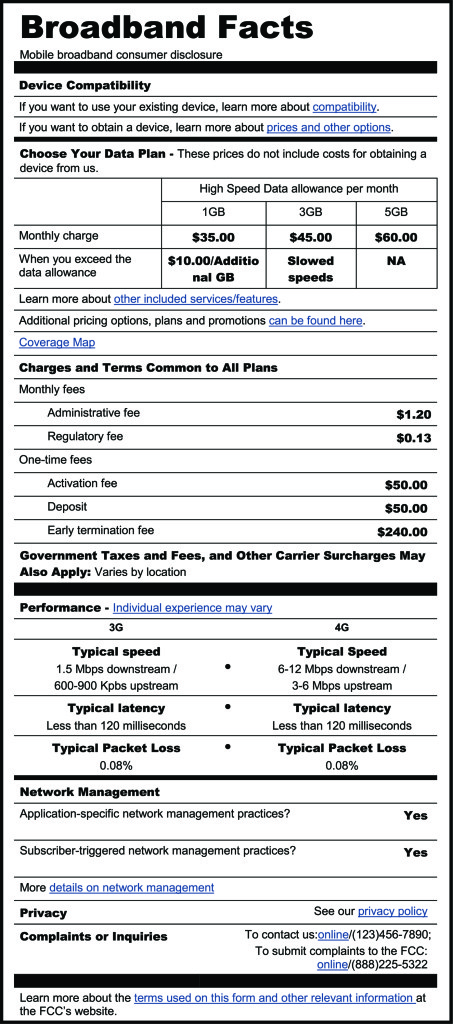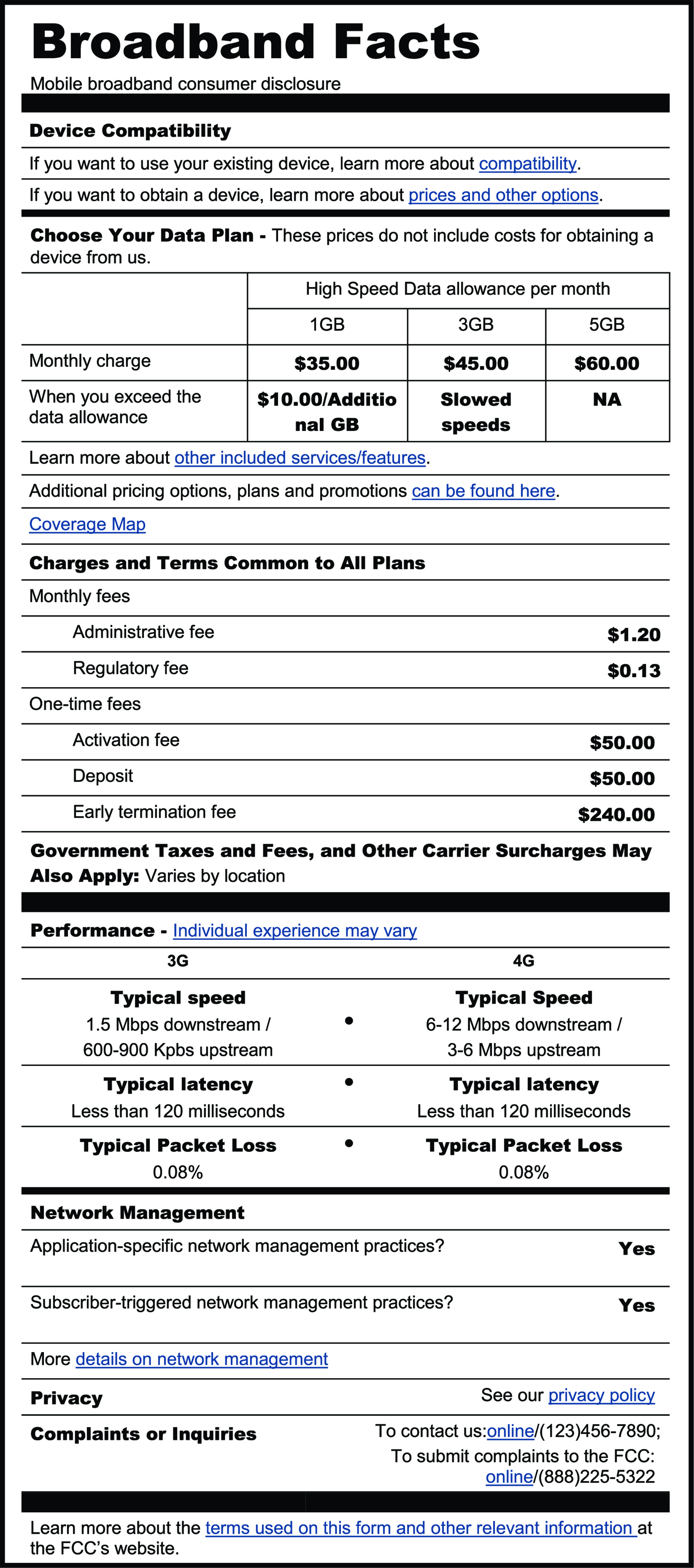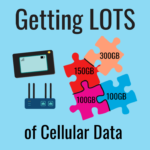The FCC yesterday unveiled a new standardized labeling scheme for mobile and fixed broadband service that aims to make it easy for consumers to compare offerings between different providers, and to fully understand just what a given plan costs and provides

The labels look (intentionally) like the standardized nutrition labeling found on food.
FCC Chairman Tom Wheeler explained:
“These labels provide consumers clarity about the broadband service they are purchasing, not only helping them to make more informed choices but also preventing surprises when the first bill arrives. Customers deserve to know the price they will actually pay for a service and to be fully aware of other components such as data limits and performance factors before they sign up for service.”
Particularly nice is the upfront disclosure of hidden fees, and especially the focus on "Typical Speeds" that a provider actually provides, rather than just on peak best-case-scenario speeds.
The guidelines actually specify that carriers need to measure and report "typical speeds" based on peak period usage, not what you might get if you wait up until 3AM, or use a tower with no one else connected to it.
Labels Not Required
Broadband providers can begin to use the newly designed labels starting today, and some certainly will. Representatives from Verizon and T-Mobile actually participated on the committee that came up with the design.
But don't expect to see them everywhere - the labeling is purely voluntary, and the CTIA trade organization told Ars Technica that it opposes the labels:
"While we appreciate that these labels will serve as a ‘safe harbor’ under the Open Internet transparency rules, CTIA members already provide disclosure and transparency as part of the Consumer Code for Wireless Service. The competitive nature of the wireless broadband market does more for consumers than regulation can hope to achieve.”
But carriers do have a pretty strong incentive to use the labels.
One of the provisions of the FCC's Network Neutrality rules requires internet service providers to "disclose this information to consumers in an accurate, understandable and easy-to-find manner" - and any provider who uses the official labeling will be granted "safe harbor" and can not be found in violation of that rule in response to consumer complaints.
It will be interesting to see how rapidly these labels become common in the mobile internet world.








 Mobile Internet Resource Center (dba Two Steps Beyond LLC) is founded by Chris & Cherie of
Mobile Internet Resource Center (dba Two Steps Beyond LLC) is founded by Chris & Cherie of